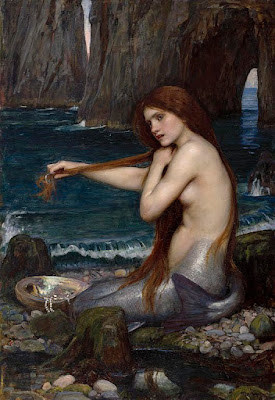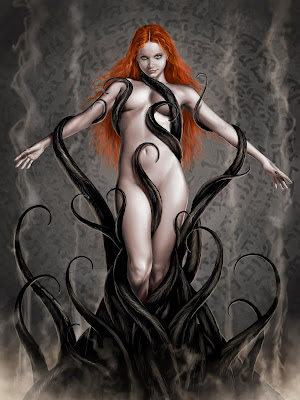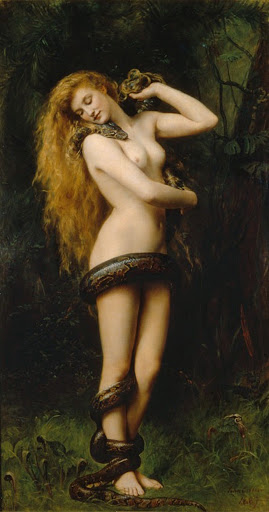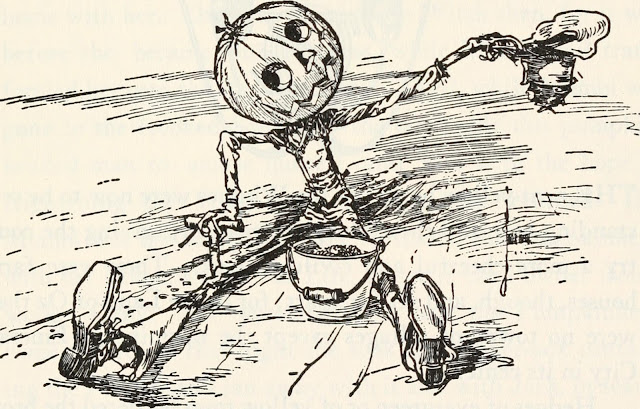Given I kicked off this whole idea with a detailed round-up of the Orc across the editions, it behooves me to at least stat one up. But which one? I have a few. In truth, there is one I have been sitting on for long while now and I should pull it out for a special occasion. I think that day is today. Plus I have done so many water-based creatures, time for something different.
So here is a monster that I talked about in the first days of this blog nearly 12 years ago! The Desert Orc.
Orc, Desert
He was an orc. That was obvious. Though there was something different about him and the others. What I had originally taken to be smaller, younger orcs were in fact elves. Orcs and elves! Traveling together across this great expanse of desert. More than that, they acted as if they were kin! They invited us to their tents where one orc and one elf who referred to each other as “brother” went about an elaborate tea ritual where we were served first. The orc and the elf then presented to each other their cups of tea in something akin to prayer or benediction. Once they drank they turned and smiled at each other. Ritual satisfied, they turned to us. The orc, Nom’dosh Thurgash and his elven brother Nom’dosh Etain, both greeted us in the most cultured elven I have heard outside of the Silver Forests.
“Welcome fellow travelers. How may the humble members of the Nom’dosh Clan aid you?”
- From the Journal of Larina Nix
 |
| Male Orc by Jacob Blackmon |
Frequency: Rare
Number Appearing: 2d12 (3d20) with roughly an equal number of Desert Elves
Alignment: Neutral [Lawful Neutral (Good)]
Movement: 120' (40') [12"]
Armor Class: 6 [13]
Hit Dice: 1d8+2 (7 hp)
THAC0: 16 (+3)
Attacks: 1 weapon (halberd)
Damage: 1d8+2
Special: Can move about in sunlight with no penalty
Save: Monster 1
Morale: 10 (12)
Treasure Hoard Class: I (P)
XP: 15 (OSE) 15 (LL)
Str: 16 (+2) Dex: 12 (0) Con: 16 (+2) Int: 10 (0) Wis: 10 (2) Cha: 12 (0)
Desert Orcs appear to be normal orcs. However, these orcs have more than just a glint of intelligence in their eyes. While their faces are still animal-like, the fierce scowl has been replaced with a stoic set to their jaw, a purpose in their eyes, and a bearing that can't be described as anything else but noble. These orcs, with their sandblasted faces and long pale hair strike you as something new and different.
Desert Orcs are nomads, their ancestral homes in the deserts were destroyed centuries ago by humans. Though they fought back and shook off the yokes of slavery and tyranny by the humans. They travel with the only other people that helped them in their great revolution, the desert elves. Desert elves and desert orcs now consider themselves as one people. They are brothers and every clan has orc and elf members that are equal in all things.
Once united they then discovered that they had skills that were mutually beneficial to each other. Orcs are still militaristic with small war cadres connected to powerful elf families. For an orc, it is an honor to serve since the more powerful the elf family the stronger their own cadre is respected. The stronger the orc cadre, the more respected the family is and the more likely they will get goods to trade. An elf sultan will travel without his wife for example, but never without his orc escorts.
For every 10 desert orcs, there will be a cadre leader of the 2nd to 4th level. For every 50 there is an additional war chieftain of 5th to 7th level. For every 100 there is a marshall and for larger groups a general. Cadres will still fight against each other in mock skirmishes, and while damage will be done they are rarely fatal. A desert orc will never raise a blade against an elf and likewise, a desert elf will never raise a blade against a desert orc. Over 1000 years of mutual respect and fighting side by side has torn down the ancient hatred that has infected their rest of their brethren worldwide.
Tea Ritual
There is a ritual that all desert orcs and desert elves will practice. When camp is made the sultan of the elves and the war chieftain of the orcs will meet in their open tent. The sultan will help the chieftain remove his armor while the war chieftain prepares the tea. When both tasks are complete, and to do this correctly requires practice so both are done at the same time. The sultan and the chieftain offer each other the tea with the renewed promise that their lines will continue to fight and honor each other. Then the remaining elves and orcs will complete their camps. If guests are present then they are served first but no elf or orc are allowed to drink until their respective leaders complete their oaths and drink.
The only species they truly distrust are humans. They both recall the tales of depredations at the hands of the Necromancer Kings. Although humans approaching their camps or caravans with respect will be heard.
--
Ok. So yeah I did it. I made "Good" Orcs. In fact, I made them 12 years ago. I also did "Good" kobolds.
Orcs are like Klingons. Yes, they were two-dimensional and evil in the TOS days, but now we are in the Next Generation and Orcs can be more. Are violent? Of course! Do they still kill people? They sure can! Are they inherently evil? No. Not these orcs. I have other orcs that are every bit as evil as are demons, but individuals can and do vary.
Likewise I am almost at a point in my games where Drow are going to split off into two separate factions, the evil demon-worshipping one and a less evil faction that wants reunification with the other elves.
So if Orcs are my Klingons, then to use a metaphor I have been using since the early 80s, elves and drow are my Vulcans and Romulans. Just like them the Vulcans and Romulans are now a new species, the Nivar. I don't have a name yet for my combined elves.
I am also adding an occasional bit to some entries, "From the Journal of Larina Nix." Or how these creatures are from the point of view of an adventurer. I figure my iconic witch is as good as any to present these details.








